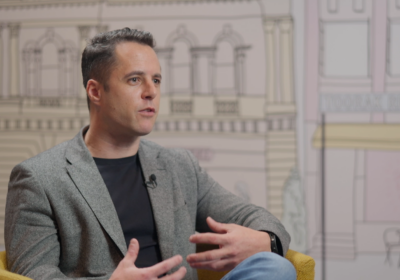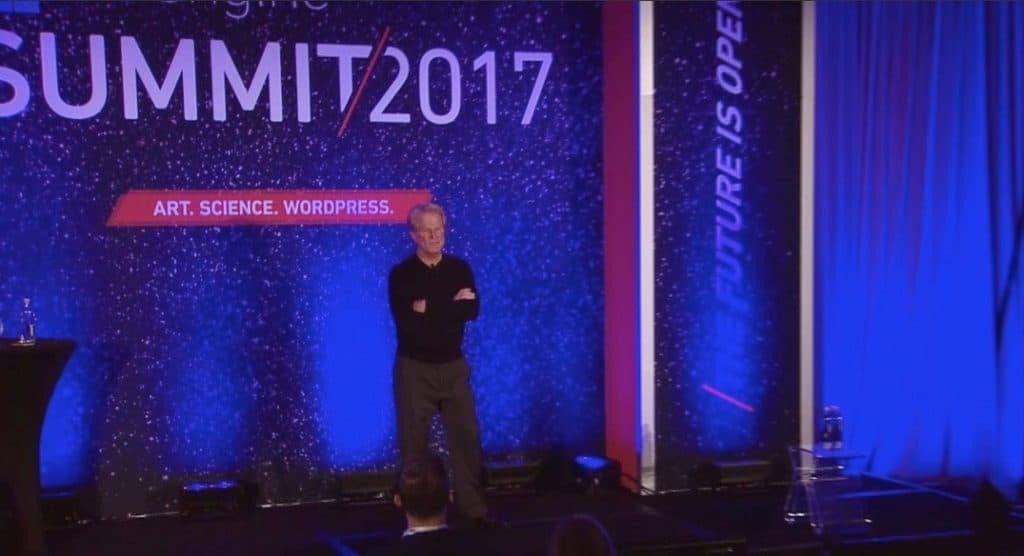When Roy Spence was introduced as a “local legend” at the recent WP Engine Summit in Austin, nobody laughed. His status is no joke; as chairman and co-founder of GSD&M he was one of the earliest ad agency executives to challenge Madison Avenue’s claim as the center of the advertising universe. The agency created the iconic “Don’t Mess with Texas” campaign, took Southwest Airlines from a small Texas carrier to one of the largest airlines in the world, and launched the earworm baby back ribs jingle for Chili’s restaurants.
Spence has taken on new mantle as purpose guru in recent years, as co-founder of The Purpose Institute, and author of several books advocating the search for a higher purpose. Most recently, Spence announced the founding of The Promisedland Project, an initiative to transform the nation into a more purpose- and community-driven culture.
“The end game of the Promiseland Project is to help begin building a culture of “US” and to help America win on purpose, not just politics,” he said.
After his speech, Spence expanded on his remarks in an interview with Velocitize.
Velocitize: You spoke about the purpose of America, but how can Americans agree on purpose when views are so polarized and opinions are so different?
Roy Spence: I know it’s kind of trite when I say: Go back to the Declaration of Independence and how it says “we hold these truths to be self-evident that all men (and it should say people, but we know what they meant) are created equal and they are endowed by their creator with some inalienable rights: life, liberty and the pursuit of happiness.” There’s never been a country in the world that has that in its creed. America was born different, I’ve said it was not born perfect—it was born different.
Adams and Jefferson didn’t exactly like each other, but they sat down in a room in Philadelphia and along with the rest of them said “we’re going to create a new kind of country where we listen to one another, we stand up for what we believe, but in the end we’re going to try to do the best for the great, great majority of American people.”
Part of this whole idea is that we can get young people to go into politics and say” “We’re going to serve the greater good and we might fight like cats and dogs, but we’re going to live up to the ideals that everybody should live up to their God-given potential.” Let’s start with that.
You spoke of steering your son to culinary school, to explain we should teach young people they can make a living doing what they love. But is that feasible with shrinking wages and rising student debt?
We have made a terrible myth that the only way that you’re going to be successful in life in America is a four-year college path. It is a myth and it’s wrong. People picking winners and losers in the ninth grade?
We have to stop this elitist idea that if you don’t go to college you’re a loser. It’s the opposite. If you work hard, you can go out there and develop a skill that you love to do. And in the process of becoming great at what you are already good at, you get to make a good living and a great life doing what you love to do and what you’re really good at. That’s at the heart of the Promiseland Project.
You talk about companies with purpose, but can marketers keep that focus when there’s so much emphasis on data and metrics? There are no metrics for purpose.
If you look at the classic data and metrics maybe there’s not. But if you look at the high-performing, high-employee-engaged, high-customer-engaged companies—if you look at them and ask: What do they have in common? They have a purpose beyond making money. Southwest Airlines: We’re going to give people freedom to fly. Lowe’s: We’re going to help people love where they live.
As I always tell analytics people: There’s an old country song about looking for love in all the wrong places. Looking for love in the right places is long-term performance, engagement, loyalty, etc.
Chief Marketing Officers need to ladder up to Chief Making a Difference Officers. We can’t just be driven by data or analytics.
It’s a hard job, but we have to put the analytics and data in their proper place. Because in the end game, if we don’t have a real strong purpose, a higher calling and inspiration, you can analyze and data yourself into oblivion.
Purpose has become a sort of buzzword for brands, how can you weed out the organizations that have real purpose and those who just pose at it?
The bottom line is if you try to make purpose a marketing gimmick and it’s not really there—I make the joke that “when Al Gore and I invented the Internet…” and what I mean is you’re not going to be able to sell “bull.” In the end, if you’re not driven by purpose and use it as a slogan or buzzword, at some point you can’t live up to that ideal.
In your speech you also said “we’re in the business of building our clients business.” Have agencies forgotten that?
I think one of the issues right now is 20 years ago there were a hell of a lot of CEOs that were ingrained in the marketing of their company. It wasn’t just the CMO or whomever.
With (then-Southwest CEO) Herbert Kelleher, we had monthly meeting marketing meetings with him, his operators, his revenue people, his financial people, the advertising agencies, and we built this amazing core. I knew conceptually as much about the revenue streams as the revenue people.
I think agencies have gotten siloed. And I don’t think they want to be, to be honest with you. I think they want to be ingrained in the bigger picture of the business.
We’ve got to ladder marketing as more than just a silo. Marketing is pretty much—I’ll go on record with this—everything. It’s how you communicate with your employees. It’s how you communicate with your community. It’s how you communicate what you stand for, what you’re all about. Marketing is not just an ad, it’s an ideal.
Read more insights from Summit’s speakers later this week in Velocitize, including a video interview with IBM’s Krystal Webber on “anticipatory design.”





Join the conversation